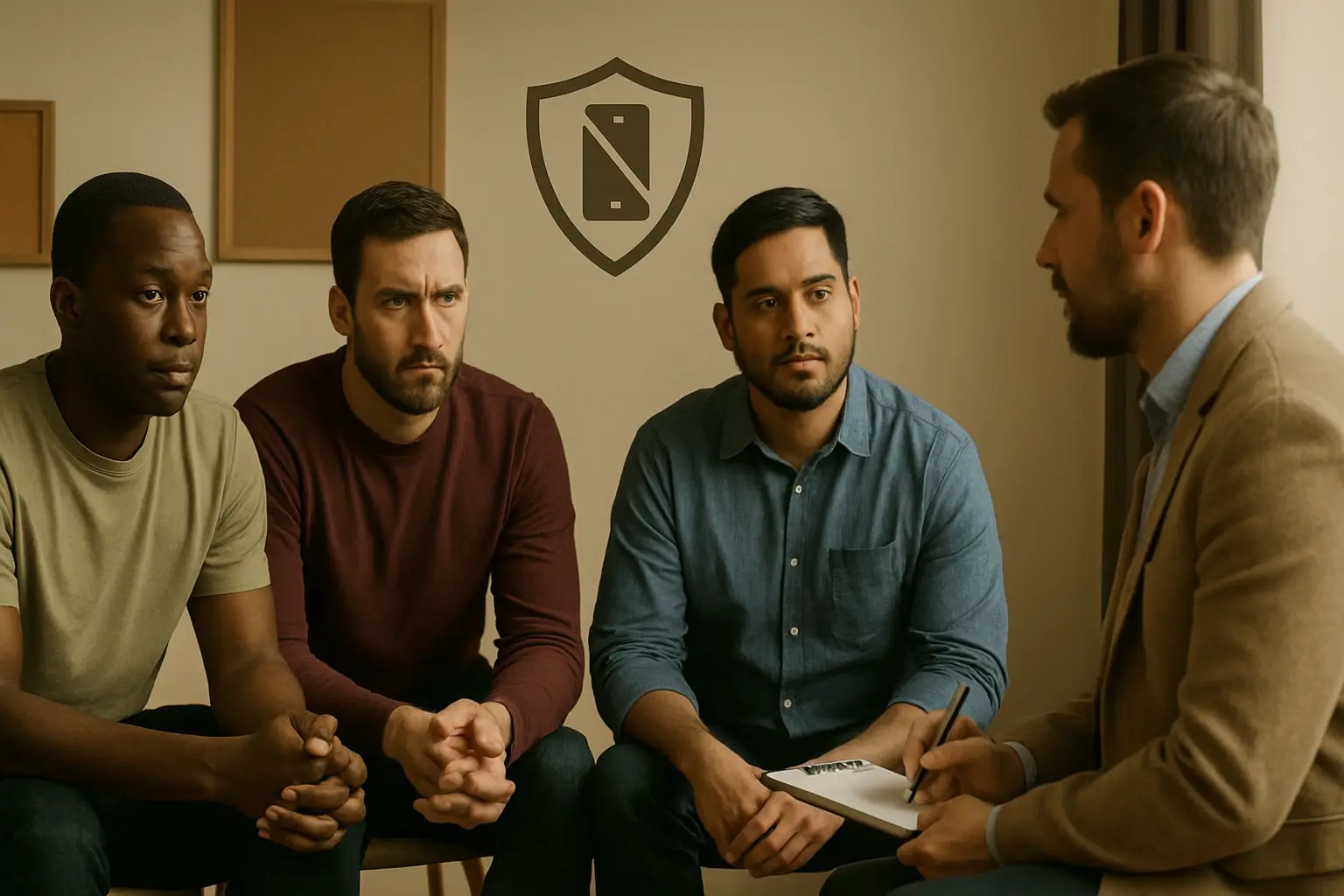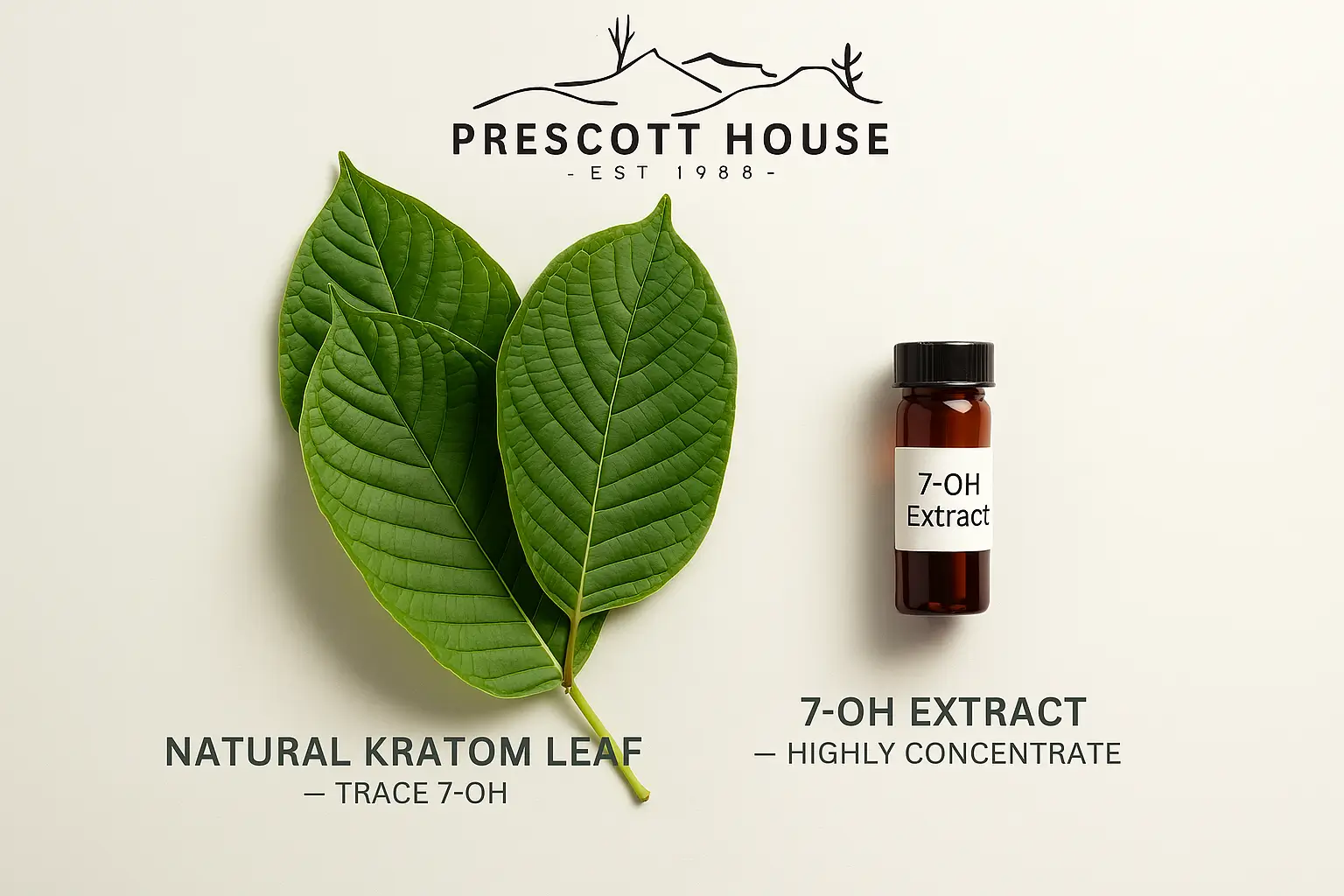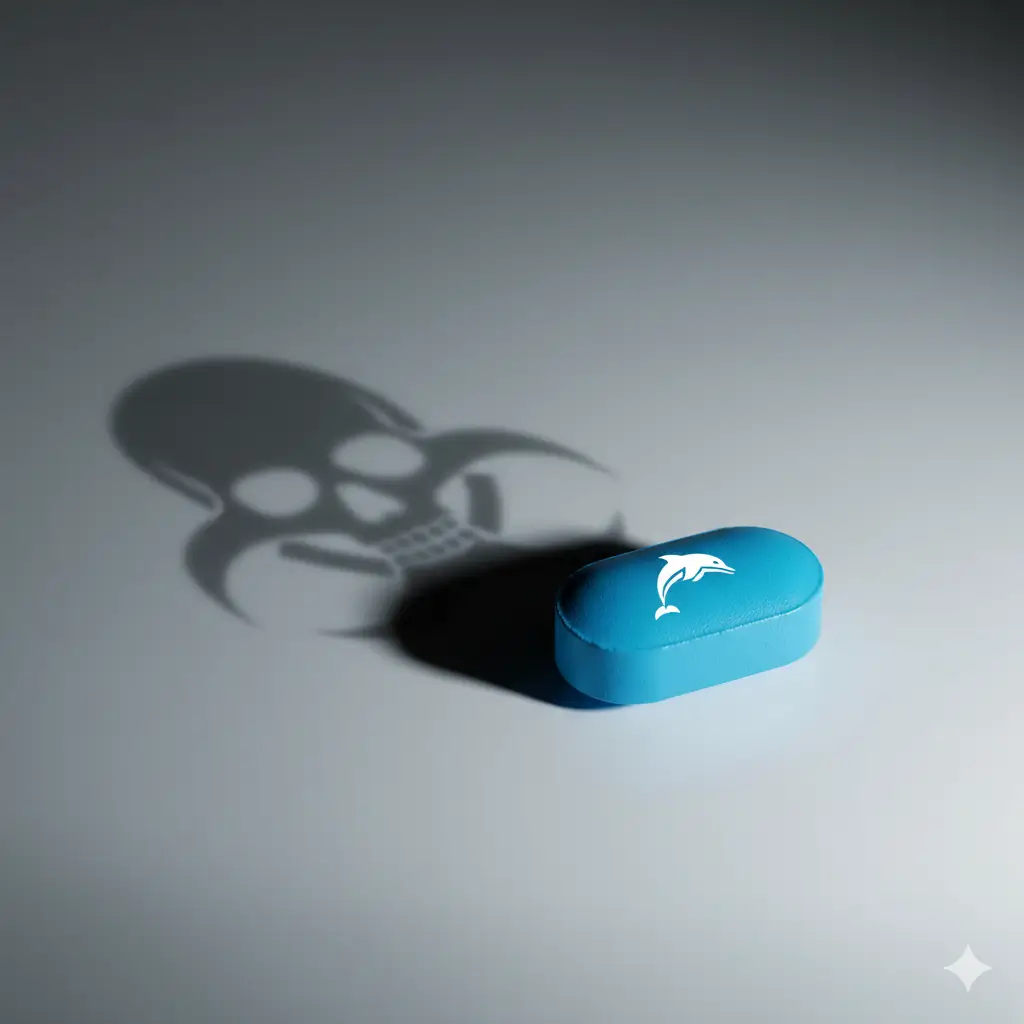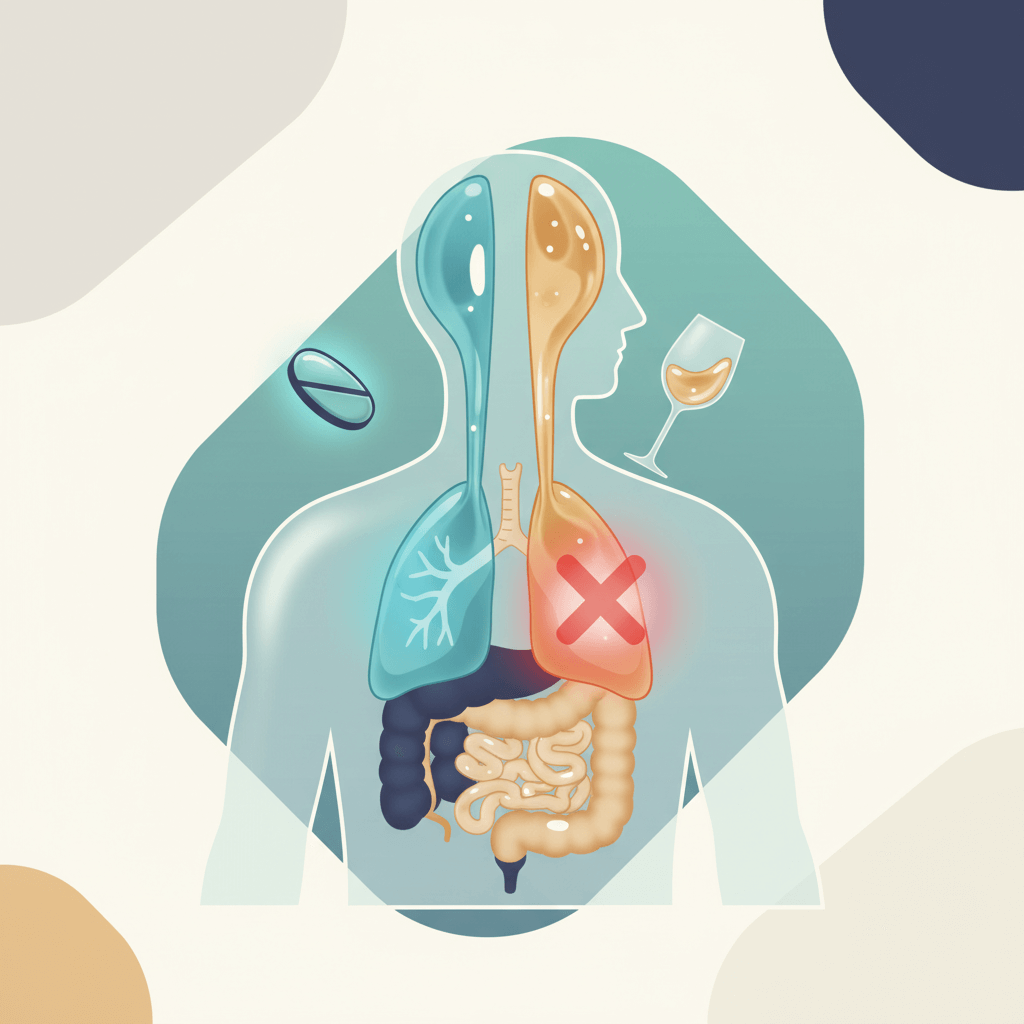In today's digital age, accessing explicit content is easier than ever. A few taps on a smartphone can instantly deliver an endless stream of pornographic material to anyone, anywhere. But when does a casual habit cross the line into a compulsive behavior that negatively impacts your life? This post will guide you through the common signs of porn addiction, helping you understand the issue and find a path forward.
The reality is that millions of people struggle with compulsive pornography use, yet many suffer in silence due to shame and stigma. Understanding the warning signs isn't about judgment—it's about recognizing when a behavior has shifted from occasional use to something that controls your daily decisions and relationships.
What is Porn Addiction? A Quick Overview
Porn addiction, more accurately termed compulsive pornography use, refers to the inability to control or stop consuming pornographic content despite negative consequences. While it's not officially listed in the DSM-5 (Diagnostic and Statistical Manual of Mental Disorders), many mental health experts recognize it as a legitimate behavioral addiction that shares characteristics with other compulsive disorders.
The brain's reward system plays a crucial role in this process. When you view pornography, your brain releases dopamine—a neurotransmitter associated with pleasure and reward. Over time, regular exposure can lead to tolerance, meaning you need increasingly intense or frequent content to achieve the same dopamine response. This neurochemical process mirrors what happens with substance addictions, which explains why breaking free can feel so challenging.
At Prescott House, we've observed that many individuals initially dismiss their pornography use as "normal" or "harmless." However, when behavior patterns begin disrupting relationships, work performance, or personal well-being, it's time to take a closer look. The key distinction lies not in occasional use, but in the loss of control and continued engagement despite harmful consequences.
10 Telltale Signs of Porn Addiction

Recognizing problematic pornography use requires honest self-reflection. The following signs represent common patterns we encounter in our treatment programs. Remember, experiencing one or two of these doesn't automatically indicate addiction, but multiple signs warrant serious consideration.
1. Escalating Use: The Never-Ending Search for More
One of the clearest indicators of developing tolerance is the need for increasingly extreme or frequent content to achieve the same level of arousal. What once satisfied you no longer provides the same dopamine hit, leading to a progressive search for more intense material.
This escalation often surprises individuals who find themselves viewing content they previously would have found disturbing or uninteresting. The brain's adaptation to constant stimulation demands novelty and intensity, creating a cycle where "enough" becomes an ever-moving target.
2. Loss of Control: When Willpower Isn't Enough
Perhaps the most frustrating aspect of compulsive pornography use is the repeated failure to cut back or stop, despite genuine attempts. You might set rules for yourself—"only on weekends" or "just for ten minutes"—only to break them repeatedly.
This loss of control often manifests as viewing pornography at inappropriate times or places, such as during work hours or in public spaces. The compulsion overrides logical decision-making, leading to increasingly risky behavior that you wouldn't normally consider acceptable.
3. Preoccupation: When Thoughts Become Consumed
Mental preoccupation represents another significant warning sign of compulsive pornography use. You might find yourself constantly thinking about when you'll next be able to view content, replaying previous sessions in your mind, or spending considerable time planning opportunities to access material without being detected.
This mental preoccupation often extends beyond the actual viewing time. Many individuals report that their concentration at work, school, or during social interactions suffers because their thoughts keep drifting to pornographic content. The cognitive bandwidth required to constantly think about, resist, or plan viewing sessions leaves little mental energy for other important life activities.
4. Neglecting Responsibilities: When Priorities Shift
A clear indicator that pornography use has crossed into problematic territory is when it consistently interferes with your responsibilities and commitments. This might manifest as arriving late to work after extended morning viewing sessions, missing important deadlines because you lost track of time, or canceling social plans to stay home and watch content.
At Prescott House, we frequently encounter clients who describe a gradual erosion of their performance in key life areas. What starts as occasionally choosing pornography over responsibilities eventually becomes a pattern where viewing takes precedence over career advancement, educational goals, or family obligations. The immediate gratification of pornography consistently wins over long-term benefits and commitments.
5. Continued Use Despite Negative Consequences
Perhaps one of the most telling signs of addiction is continuing the behavior even when you're fully aware of its harmful impact on your life. You might recognize that your pornography use is damaging your relationship with your partner, affecting your work performance, or causing financial strain, yet you find yourself unable to stop.
This continuation despite consequences often creates a profound sense of powerlessness. You understand rationally that the behavior is causing problems, but the compulsive urges feel stronger than your logical reasoning. Many individuals describe feeling like they're watching themselves make choices they don't want to make, creating a disconnect between their values and actions.
6. Secrecy and Hiding: The Double Life
Compulsive pornography use almost inevitably leads to elaborate systems of secrecy. You might become skilled at quickly switching browser tabs, using incognito mode religiously, clearing search histories, or even creating separate user accounts or devices specifically for viewing.
This secretive behavior often extends beyond just hiding the viewing itself. You might lie about your whereabouts, make excuses for needing privacy, or create explanations for why you seem distracted or tired. The energy required to maintain these deceptions adds another layer of stress and can contribute to feelings of guilt and shame.
7. Using Porn to Cope: The Emotional Escape
When pornography becomes your primary method for dealing with difficult emotions, it signals a problematic dependency. Whether you're stressed about work, feeling lonely, dealing with anxiety, or processing disappointment, turning automatically to pornographic content as a coping mechanism indicates an unhealthy reliance.
This pattern is particularly concerning because it prevents the development of healthier coping strategies. Instead of learning to process emotions, seek social support, or engage in constructive stress-relief activities, you've trained your brain to seek the temporary escape that pornography provides. Over time, this can actually increase emotional instability as your natural coping mechanisms atrophy.
8. Loss of Interest in Real-Life Sex
One of the most relationship-damaging aspects of compulsive pornography use is how it can affect your ability to engage in and enjoy intimate relationships with real partners. You might find that physical intimacy with your partner feels less exciting, more difficult to maintain arousal during, or emotionally disconnected compared to the intense stimulation of pornographic content.
Some individuals develop what's sometimes called porn-induced erectile dysfunction (PIED), where they can achieve arousal while viewing pornography but struggle with sexual performance with real partners. This creates a vicious cycle where relationship intimacy becomes increasingly difficult, potentially driving more pornography use as a substitute for genuine connection.
9. Financial Troubles: When Free Isn't Enough
While much pornographic content is freely available, compulsive use often escalates to paid content, premium subscriptions, cam site interactions, or purchasing specific videos or images. What might start as an occasional small purchase can quickly snowball into significant monthly expenses that strain your budget.
Many individuals rationalize these expenses as "small amounts" or "occasional treats," but when tallied over time, the financial impact can be substantial. Some people find themselves hiding credit card statements, using separate accounts, or even going into debt to fund their compulsive viewing habits.
10. Experiencing Withdrawal Symptoms
When you're unable to access pornographic content—whether due to technical issues, being in public, or attempting to abstain—you might experience symptoms that mirror withdrawal from substance addictions. These can include irritability, anxiety, restlessness, difficulty concentrating, and strong cravings.
These withdrawal symptoms often surprise people because they expect that stopping a "behavioral" addiction should be easier than stopping substance use. However, the brain's reward pathways respond similarly to both types of addictive stimuli, making the discontinuation process genuinely challenging from a neurochemical perspective.
The Impact of Untreated Porn Addiction
Left unaddressed, compulsive pornography use creates cascading effects that touch every aspect of your life, relationships, and well-being.
On Relationships
The relationship damage from untreated pornography addiction can be devastating and long-lasting. Partners often report feeling betrayed, inadequate, and confused about why their loved one seems more interested in fantasy than in real intimacy with them. The secrecy required to maintain compulsive viewing creates emotional distance and erodes the trust that forms the foundation of healthy relationships.
Beyond the immediate hurt of discovery, pornography addiction can create unrealistic sexual expectations that make genuine intimacy feel disappointing or inadequate. Partners may feel pressure to perform in ways that mirror pornographic scenarios, creating additional strain and potentially traumatic experiences in what should be loving, consensual interactions.
On Mental Health
The mental health impact of untreated pornography addiction creates a complex web of interconnected problems. Shame and guilt from the compulsive behavior often lead to social isolation as individuals withdraw from friends, family, and activities they once enjoyed. This isolation can worsen existing depression and anxiety while creating new mental health challenges.
The constant cycle of compulsion, temporary relief, and subsequent guilt creates chronic stress that affects overall psychological well-being. Many individuals develop secondary mental health issues, including increased anxiety about being discovered, depression related to feeling out of control, and self-esteem issues stemming from the disconnect between their values and behaviors.
On Professional Life
Career consequences from pornography addiction can be swift and severe. Decreased productivity due to mental preoccupation, fatigue from late-night viewing sessions, and actual viewing during work hours all contribute to declining job performance. In severe cases, individuals risk termination if they're discovered accessing inappropriate content on work devices or during work hours.
The cognitive impact extends beyond just time spent viewing. Many people report that their creativity, problem-solving abilities, and motivation suffer as their brain becomes increasingly oriented toward seeking the next opportunity for pornographic stimulation rather than engaging fully with professional challenges and opportunities.
Steps to Take if You Recognize These Signs
If you've recognized multiple warning signs in your own behavior, know that acknowledging the problem is actually a significant step forward. Many people struggle with compulsive pornography use for years without ever reaching this level of self-awareness. Your recognition of these patterns demonstrates strength, not weakness.
Acknowledge the Problem
The first and most crucial step is honest acknowledgment that your pornography use has become problematic. This isn't about accepting shame or guilt—it's about recognizing that a behavior has grown beyond your control and is negatively impacting your life. At Prescott House, we've seen that individuals who can honestly assess their situation without defensiveness are often the most successful in recovery.
Seek Professional Help
Professional support can make an enormous difference in breaking free from compulsive pornography use. Certified Sex Addiction Therapists (CSATs) specialize in understanding the complex relationship between sexuality, compulsion, and recovery. These professionals can help you develop personalized strategies for managing triggers, rebuilding healthy coping mechanisms, and addressing any underlying mental health concerns.
Support groups like Sex Addicts Anonymous (SAA) or SMART Recovery provide community connection with others who understand your struggles. The shame and isolation that often accompany pornography addiction can begin to lift when you realize you're not alone in this experience.
Utilize Technology Wisely
While technology may have contributed to the problem, it can also be part of the solution. Installing content blockers and filters on your devices creates helpful barriers that can interrupt automatic patterns of use. However, remember that these tools work best as part of a comprehensive approach, not as standalone solutions.
Develop Healthy Coping Mechanisms
Recovery involves replacing compulsive behaviors with healthy alternatives. Mindfulness practices can help you become more aware of triggers and emotional states that lead to viewing. Regular exercise provides natural mood regulation and stress relief. Engaging in meaningful hobbies and activities helps rebuild a sense of identity and purpose beyond the addiction.
If you're in a relationship, focusing on rebuilding non-sexual intimacy with your partner can be healing for both of you. This might involve honest conversations, shared activities, or couples therapy to work through the impact of the addiction together.
Conclusion
Recognizing the signs of porn addiction is a crucial first step toward regaining control of your life and relationships. The ten warning signs we've explored—from escalating use and loss of control to financial troubles and withdrawal symptoms—represent common patterns that affect millions of people worldwide. Understanding these signs isn't about judgment or shame; it's about gaining clarity on when a behavior has shifted from occasional use to a compulsive pattern that controls your daily decisions.
The impact of untreated pornography addiction extends far beyond the viewing itself, affecting your relationships, mental health, and professional life in ways that can feel overwhelming. However, the very fact that you've read this article and reflected on these signs demonstrates the self-awareness that forms the foundation of recovery. Many people struggle with these patterns for years without ever reaching this level of recognition.
Recovery from compulsive pornography use is absolutely possible, but it rarely happens in isolation. Professional support, healthy coping strategies, and often the support of understanding friends, family, or support groups create the framework for lasting change. At Prescott House, we've witnessed countless individuals rebuild their lives, repair their relationships, and rediscover their sense of self-worth after addressing problematic pornography use.
Remember, seeking help is a sign of strength, not weakness. You deserve relationships built on genuine intimacy, a clear mind focused on your goals and values, and freedom from behaviors that don't align with who you want to be. Recovery is not just about stopping a problematic behavior—it's about reclaiming your life and building the healthy, connected existence you deserve.
If you or someone you know is struggling with compulsive pornography use, don't wait for the problem to resolve itself. The patterns we've discussed tend to worsen over time without intervention, but with proper support and commitment to change, you can break free from these cycles and build a healthier, more fulfilling life. Take the first step today by reaching out to a mental health professional who understands addiction, connecting with a support group, or having an honest conversation with a trusted friend or partner. Your future self will thank you for having the courage to seek help now.
References
- What Is Porn Addiction? - Verywell Mind
- Porn Addiction - Psychology Today
- Porn Addiction Signs, Symptoms & Side Effects - The Recovery Village
Related Porn Addiction Articles
- Porn Addiction: 10 Warning Signs You Can’t Ignore — This post walks you through key red flags that pornography use has become harmful. Prescott House
- Porn Addiction Symptoms: Recognizing the Signs of Dependency — A deeper dive into behavioral and emotional symptoms that signal dependency. Prescott House
- Can Porn Addiction Be Cured? — Explores the possibility of long-term recovery and what “cure” looks like in a behavioral addiction. Prescott House
- How Long Does Porn Addiction Recovery Take? — Discusses the phases of recovery and typical timelines for progress. Prescott House
- Is Porn Addiction Treatable? Finding Hope in Therapy — Focuses on evidence-based treatments (CBT, mindfulness, etc.) and hope for healing. Prescott House
- Understanding Recovery & Healing: Do Trauma Survivors Turn to Porn? — Looks at the link between trauma history and pornography use. Prescott House
- The Best Porn Blockers of 2025: Your Ultimate Guide — Practical tool recommendations for creating digital boundaries in recovery. Prescott House
- Porn Addiction Recovery - At Prescott House we have helped countless Porn Addicts find recovery. To learn more click here or call (866) 425-2470













